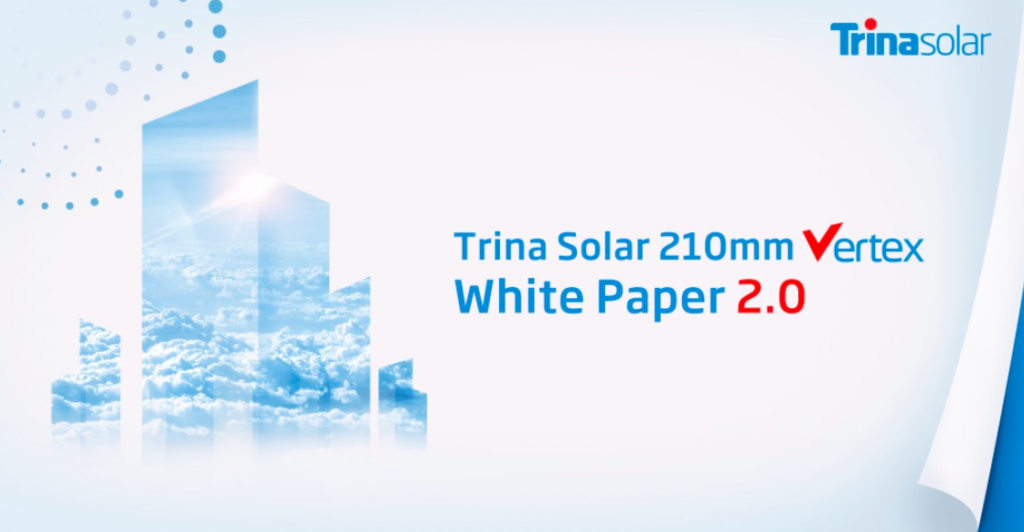
Trina Solar has published version 2.0 of its 210 Vertex White Paper, with a view to comprehensively presenting the value of the 210 Vertex’s ultra-high power to the industry.
The 210 ultra-high power modules have achieved significant breakthroughs in production capacity, performance and adoption by customers since version 1.0 of the White Paper was published last year. Version 2.0 now focuses on illustrating the ultra-high power module’s multiple aspects of innovation and reliability, setting a new benchmark and further advancing the technology of the photovoltaic industry.
Innovation 1: 210 leads in diverse layout design for all types of application
Traditional modules adopt a layout design of 610 or 6*12, while 210 Vertex modules introduce a varying layout of 5*8, 5*10, 5*11, 6*10 and 6*11, based on 210mm silicon wafers. On the one hand, these designs can match half-cut or 1/3-cut cell technology to provide different application solutions for customers and, on the other, they can balance the module’s electrical performance to optimize area and weight and to improve installation compatibility. This can also eliminate additional costs and avoid supply limitation of key materials. In all types of application scenarios, 210 Vertex modules are 40-90W above the average industry level, creating more value for customers.
Innovation 2: Modules with high-string power are designed based upon system logic to boost value
The core factor in reducing BOS costs is increasing string power. From cells and modules to strings, arrays and the entire PV power plant, the string is the basic circuit unit of a PV system. String power can be significantly increased based on a design of low voltage and high current. Under the same volume of installation, the higher the string power, the fewer strings are needed, so BOS costs fall. In conjunction with lower BOS costs, the cost of trackers, pile foundations, cables and labour for the downstream also falls. The string power of 600W+ modules is 41% greater than that of other modules in the industry, and BOS cost savings can be as high as 4 to 6%, thus providing a significant overall advantage for further reducing LCOE.
600W+ ultra-high power modules are specially designed for large-scale power plants, and by thinking entirely from the perspective of system application, they improve string power, reducing BOS cost.
Innovation 3: Vertical portrait packaging solution, increasing loading power by 12%
Since 210 Vertex modules have been adopted worldwide, logistics costs, safety of transportation and convenience of operation have come into play. For 600W+ series products, Trina Solar has changed its packaging method to vertical portrait, so that the width of the module is no longer limited by the height of a container, this change making maximum use of its internal capacity. Loading power is 12% higher than with more orthodox methods, resulting in an 11% cut in transport costs. Factory packaging is completed by automated equipment to ensure safety and efficiency, and when the module pallets are transported, they are closely arranged inside the container to avoid shaking. Finally, stable and reliable transfer is achieved at the project site to ensure safe delivery to customers.
210 modules incorporate eight technological innovations, including low-voltage design, high-density interconnection and auxiliary tools. They provide a full reliability guarantee, since the products are also fully verified in terms of dynamic mechanical load, hot spot and operating temperature.
The value of 210 technology lies in building a technical platform
210 is not merely an innovative product technologically, it also provides greater value because of its innovative technology platform, which enables synergy of upstream and downstream innovation and R&D. Trina Solar has solved the problems of product reliability, raw material supply guarantee and systematic compatibility and has achieved consistent product optimization and rapid industrialization. The platform provides more flexibility and potential for module design and customer solutions.

